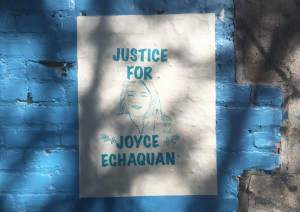Canada’s institutionalized denial regarding its involvement in the Transatlantic slavery regime perpetuates the notion that Canada’s history and contemporary ideologies are beyond racist sentiments and influence. To properly confront contemporary racism, it is imperative that we examine Canada’s historical affiliations with slavery and recognize the institutions, wealth, and networks that emerged as a result and which remain. Pertinent to this discussion is the acknowledgment that McGill University was built by the fortune of James McGill, a fortune which was, itself, built on the labour of slaves.
The 2020-2021 academic year marks McGill’s Bicentennial, the institution’s 200th anniversary. An acknowledgment of McGill nineteenth-century affiliations with the slave-owning class must be central to McGill’s anniversary commemorations. McGill’s institutionalized avoidance of its racist history is exemplified by the bolstering of James McGill’s legacy and the subsequent academic denial of his actions. By overlooking James McGill’s life and career, and by failing to recognize the harm inextricably linked to McGill’s legacy, we are deeming it acceptable to glorify slave owners who profited off enslaved peoples’ free labour: so much so that they were able to establish a school in their own name. McGill’s inability to acknowledge its past propagates the patriarchal reality that white men can scathe-by unnoticed and unchallenged, regardless of their oppressive actions.
James McGill’s legacy is remembered positively, not only via the university’s name but also through grants and opportunities offered to professors. For instance, the “James McGill Research Chair” recognizes a senior scholar’s status as an outstanding and original researcher with international leadership in their field(s) of study. The award is comparable to that of a Canada Chair Tier One (1). This award is the highest honour McGill offers and is often granted to professors in order to retain them at McGill. The question must be posed: what is the best course of action for a professor who is reluctant to affiliate their research with the “James McGill” name? There is currently no alternative award. Additionally, James McGill’s statue, the Le James bookstore, the James Administration Building, and the avoidant language frequently mobilized on McGill’s website, all speak to McGill’s collusion in glorifying the legacy of a slave owner. McGill’s 200th anniversary, therefore, should be used as a vehicle to face its traumatic history and repair the damages implicit within the institutionalized bolstering of James McGill’s exploitative actions and oppressive behaviour.
Consistent with other members of the Montreal merchant class, James McGill gained his fortune through his exploitation of the fur trade. McGill’s Montreal-based business operation quickly expanded to the lucrative transoceanic trade in the Caribbean, whereby enslaved peoples’ labour was exploited to produce plantation goods. Historical documents, such as a 1797 business ledger, indicate that McGill occupied a consistent holding in large shipments of rum, molasses, and tobacco (2). Therefore, McGill’s personal fortune was developed and sustained on the backs of enslaved peoples’ labour.
McGill’s affiliations with slavery, however, were not only out of sight, out of mind, and overseas; McGill also owned between five or seven enslaved peoples in his lifetime. Scholar Marcel Trudel lists McGill’s person slave count as seven. This list includes an unknown panis (died in 1778 at the age of 10), a Native female named Marie (died in 1783 at the age of 10 or 12), Sarah, (purchased at the age of 25), Marie-Louise, (died in 1789), Marie-Charles, (also known as Charlotte), and Jacques (died at the age of 1838 at the age of about 80) (2). However, Frank Mackey’s more recent research concludes that Sarah, Marie-Charles, and Charlotte were all the same person. Therefore, James McGill likely owned five slaves (2). Notably, according to Trudel’s findings, in 1759, 3604 Indigenous and African enslaved persons lived in New France; 1,132 were classified as Black and 52.3% lived in Montreal (3). Therefore, enslaved Africans, though visibly present in Montreal’s society, were an expensive and rare commodity. By Montreal’s standards and Canadian standards at large, having more than one or two enslaved persons was significant, and abnormal. The fact that James McGill’s ownership of upwards of five slaves was not normalized within Montreal’s society indicates his insistent adherence to racist and oppressive ideals. McGill’s starkly oppressive sentiments and actions were and continue to be overlooked due to his wealth and status.
In 1821, McGill was built and established due to James McGill’s bequeathing of £10,000 to the Royal Institution for the Advancement of Learning preceding his death in 1813 (4). James McGill donated this money on the condition that the school would be called “McGill College.” It is essential to recognize that the money bequeathed by McGill was derived from the lucrative business of human oppression: slavery. For McGill University to begin to repair its destructive history and its collusion with slavery, it is imperative that the Bicentennial commemorations acknowledge James McGill’s past. McGill University should begin to reverse its glorification of James McGill’s legacy and recognize him for who he truly was, a slave owner. As McGill students, by allowing this part of McGill’s history to be swept to the side and forgotten, we are participating in slavery’s ongoing and perpetual legacy. The following books are recommended for a deeper, archival analysis per slavery in Canada: Frank Mackey’s Done with Slavery: the Black Fact in Montreal, 1760-1840, Marcel Trudel’s Canada’s Forgotten Slaves: two centuries of bondage, and Charmaine Nelson’s Slavery, Geography and Empire in Nineteenth century Marine Landscapes of Jamaica and Montreal. To participate in the formation of McGill’s Bicentennial commemorations, the following link (https://www.mcgill.ca/arts/faculty-staff/mcgill-200?fbclid=IwAR2yDtXPX7V0-m1mLG0n4JOLnKvIKmvPFgIHVgHBsVBZj7W7dDtc90S5-Wo) allows one to nominate an event for McGill’s celebration. By spreading awareness and knowledge regarding McGill’s collusion with slavery amongst the student body, the McGill administration will have no choice but to acknowledge their forgotten history.
References:
(1) “James McGill Professors,” McGill, (3 February, 2020), https://www.mcgill.ca/provost/academics/distinguished-professorships/jmp.
(2) Charmaine Nelson, Slavery, Geography and Empire in Nineteenth-Century Marine Landscapes of Montreal and Jamaica, (London: Routledge, Taylor & Francis Group, 2016), 87.
(3) Marcel Trudel and George Tombs, Canada’s forgotten slaves: two centuries of bondage, (2013).
(4) “The Royal Charter of McGill University,” McGill, (4 February, 2020). https://www.mcgill.ca/secretariat/charter-statutes/royal
Feature photo source: Edward Bilodeau on Flickr https://www.flickr.com/photos/bilodeau/4422405655/in/photolist-7JMZ8n-6GSDTD-n9kJf2-nhdr3-6GSE42-6GSBp2-6GWH8s-6GWFMU-6GSCvK-xUuA9-6GSAkF-6GWGFm-6GSEAD-6GSDvx-6GWK9E-6GWFro-argdFy-rxYHpc-6GSAWH-6GWHvY-MrNZN-6GSCQa-6GWHwC-6GSCoD-6GWH1C-A1eST-6GWKG9-6GWKjG-6GSAzT-ehpnzE-rXSyWQ-rXkm7d-rXTLcA-bfjfQM-EZ1ex-EZ1ec-6GSDaM-6GSA7X-6GSBSM-6GSBZK-rCswcN-6GSzDc-6GWD4h-7ekR5-EZ1eH-bxpWNP-6GWEXA-6nb7nR-iDjguX-6GSyGv
Bella Silverman is a double major in history and art history at McGill University. Bella’s academic goal is to uncover histories that are normally concealed due to patriarchal structures and the systematic canonization of history.





